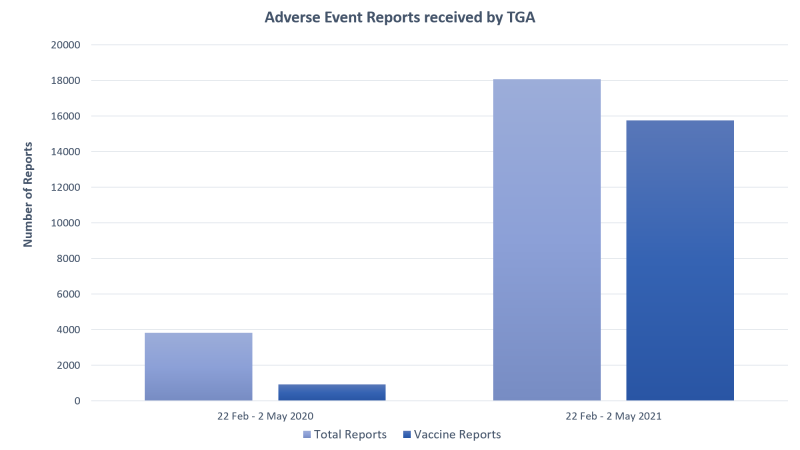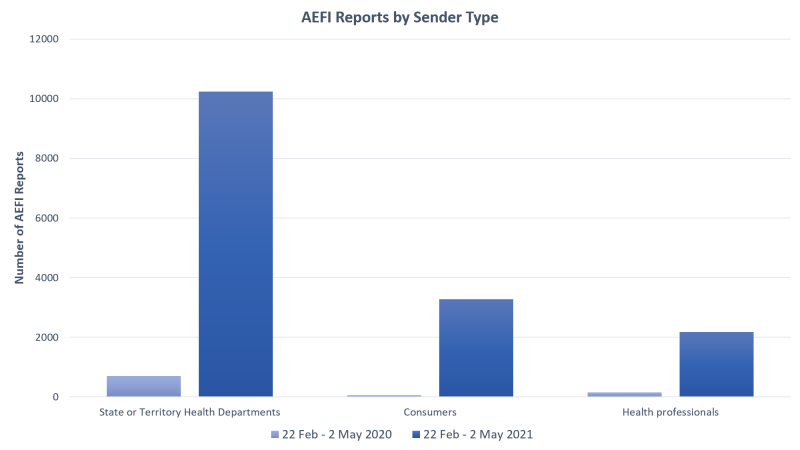The government is now operating in accordance with the Guidance on Caretaker Conventions, pending the outcome of the 2025 federal election.
The Therapeutic Goods Administration (TGA) has been closely monitoring suspected side effects (also known as adverse events) from the use of COVID-19 vaccines since the national roll-out began on 22 February 2021. Importantly, adverse events reported to the TGA are often not caused by the vaccine itself.
Current status
The most frequently reported suspected side effects associated with COVID-19 vaccines continue to be events that are commonly experienced with vaccines generally. These include headache, muscle and joint pain, fever and pain at the site of injection. In clinical trials, up to 80% of people who received either the AstraZeneca or Pfizer Comirnaty COVID-19 vaccines experienced these common vaccine reactions. They were more common after the first dose of the AstraZeneca vaccine, and the second dose of the Pfizer Comirnaty vaccine. As part of the TGA’s enhanced safety monitoring of these vaccines, we review cases of significant adverse events and analyse report data to look for patterns that indicate any possible safety issues for investigation.
Five additional reports of blood clots and low blood platelets have been assessed as thrombosis with thrombocytopenia syndrome (TTS), likely to be linked to the AstraZeneca COVID-19 vaccine. The cases were in a 74-year-old man and a 51-year-old woman from Victoria, a 66-year-old man from Queensland, a 64-year-old woman from Western Australia and a 70-year-old man from Tasmania. These take the total Australian reports assessed as TTS following the AstraZeneca COVID-19 vaccine to 11. To 2 May 2021, approximately 1.4 million doses of the AstraZeneca vaccine had been administered.
Encouragingly, of the five cases reported in our statement on 23 April 2021 as hospitalised with thrombosis with thrombocytopenia following vaccination, four have now been discharged from hospital and are either at home or have returned to work.
Learn about the TGA’s COVID-19 vaccine safety monitoring and reporting activities or report a suspected side effect





